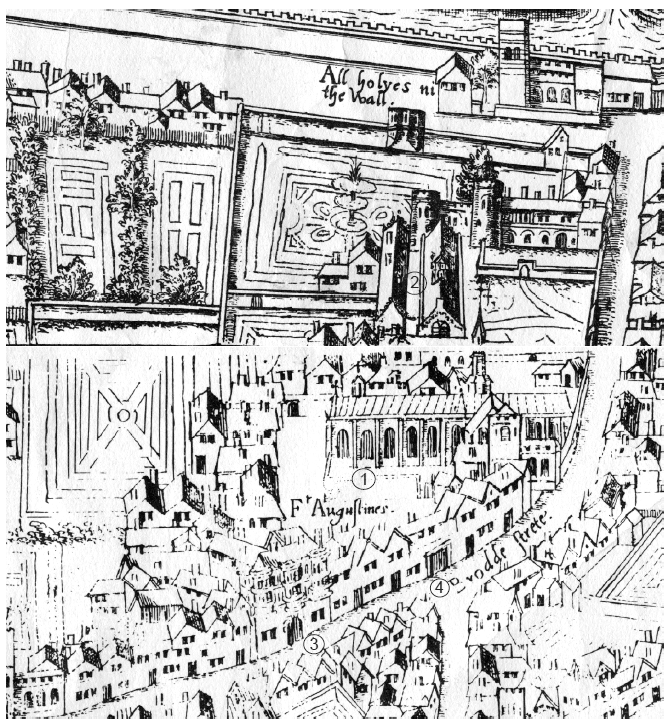Should one dare claim acquaintance with Thomas Cromwell or, better said, the man so vividly brought within a hair’s breadth of life in Hilary Mantel’s three monumental works of fiction (last spoken about by me here), then publication of new research into Austin Friars, the place (also brilliantly described/imagined by Mantel) that Cromwell called home, is a matter deserving of attention.

The University of Exeter historian, Nick Holder, who has spent his (still short and oh so promising!) academic life researching the medieval friaries of London, has published a wonderful article in the Journal of the British Archeological Association (and for all to read!), in which he reconstructs the historical Thomas Cromwell’s original tenement on the Augustinian estate and the expansive residence that he later developed on adjacent land; purchased as his status and circumstances rose, and to be enjoyed only briefly before his grisly demise. Referencing an array of documentary evidence – surveys, deeds, letters – Holder richly illustrates his findings with his own drawings and plans and there is a particularly fine artist’s reconstruction of Cromwell’s mansion on Throgmorton Street in 1539 by Peter Urmston. The piece is detailed – chock a block full of information on purchases, artisans and tradesmen, building materials – but such fun to read and look at and imagine along with, that the lay time traveler is not left behind, rather taken along, back to the hurly-burly of medieval London. Evidenced, also, is a location that thrives from commerce and merchant endeavor and prospers from its cosmopolitan custom and flair – Italians, French, Germans, Dutch. Welcome to the London of the Tudors! (Puts to shame some little England sorts of these days! I say not Brexit, years on I remain in denial!)
As intimated, I consider Mantel’s descriptions of interiors, exteriors, even of posteriors to be absolutely dazzling, but I can’t think that she wouldn’t have been delighted to benefit from Holder’s work. Or perhaps she had been allowed a glimpse, because I did notice Holder’s first engagement with the subject was in his doctoral thesis in 2011 (also available! an academic obviously not adverse to sharing of his scholarship! he shall have his reward!) on the Friaries of London in general; that before the publication of Mantel’s second book.
Beyond the spatial reconstruction, amongst many there has been quite some interest in inventories (of artwork, books, etc.) that have been uncovered, and that seem to suggest Cromwell was not quite the zealous religious reformer that some would portray him, but rather a traditional Catholic of the day. I actually find myself not so surprised; for Mantel’s Cromwell, irrespective of his bluster and impatience with religious fervor, did seem to me to have at least some sympathy with those of the old faith, if not the more fundamentally inclined papists. Certainly, Cromwell’s lengthy, youthful Florentine sojourn (and all the catholic accoutrements that would have implied), seems to have clearly influenced his aesthetic tastes, not to mention provided him with an apprenticeship in the interaction of religion with the politics of sovereignty and power (just think, around about that time, for instance: Medicis, Borgias, Machiavelli, Savonarola!). While, any higher religious imperative that Cromwell may once have had, may at least have been diminished by his pursuit, and hanging on to, of political power and the King’s favor, I recognized an inherent spiritualism, an attraction to mysticism and a respect for the pious (especially when they were women, for instance, Catherine of Aragon and her daughter Mary Stuart, Th. More’s daughter Margaret Roper) that would have been anathema to the Protestant zeitgeist.
Continue Reading…
